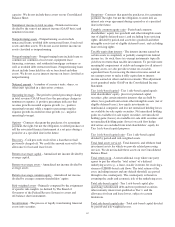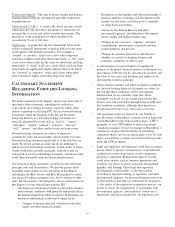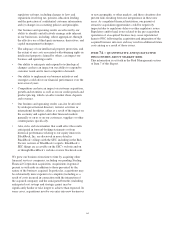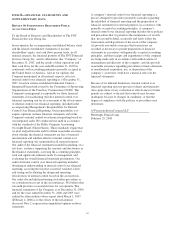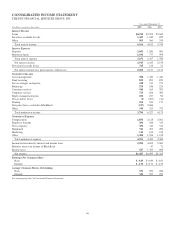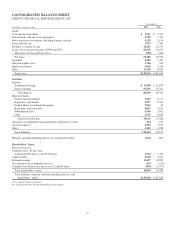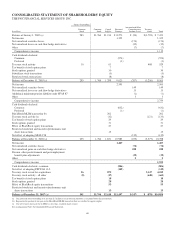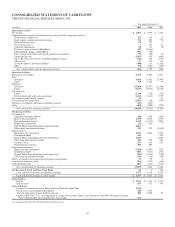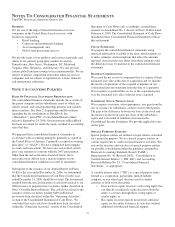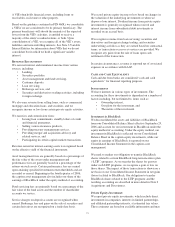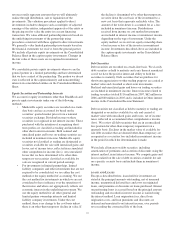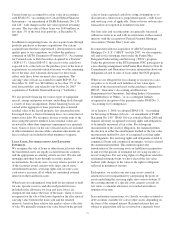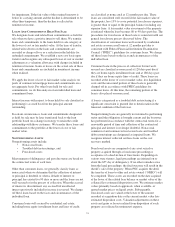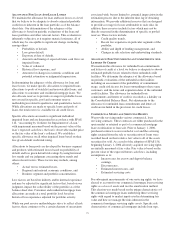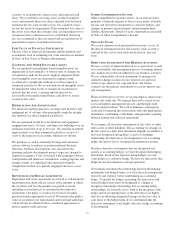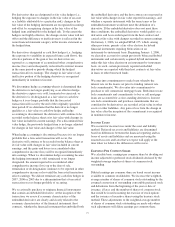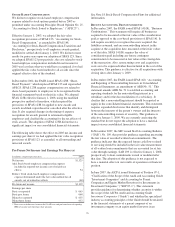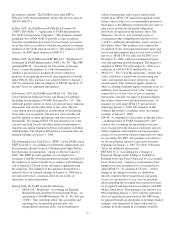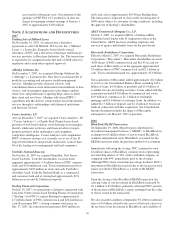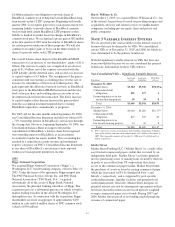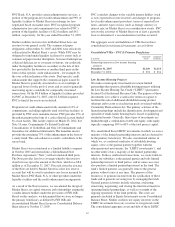PNC Bank 2007 Annual Report Download - page 77
Download and view the complete annual report
Please find page 77 of the 2007 PNC Bank annual report below. You can navigate through the pages in the report by either clicking on the pages listed below, or by using the keyword search tool below to find specific information within the annual report.not necessarily represent amounts that we will ultimately
realize through distribution, sale or liquidation of the
investments. The valuation procedures applied to direct
investments include techniques such as multiples of adjusted
earnings of the entities, independent appraisals of the entity or
the pricing used to value the entity in a recent financing
transaction. We value affiliated partnership interests based on
the underlying investments of the partnership using
procedures consistent with those applied to direct investments.
We generally value limited partnership investments based on
the financial statements we receive from the general partner.
We include all private equity investments on the Consolidated
Balance Sheet in the caption equity investments. Changes in
the fair value of these assets are recognized in noninterest
income.
We consolidate private equity investments when we are the
general partner in a limited partnership and have determined
that we have control of the partnership. The portion we do not
own is reflected in the caption minority and noncontrolling
interests in consolidated entities on the Consolidated Balance
Sheet.
Equity Securities and Partnership Interests
We account for equity investments other than BlackRock and
private equity investments under one of the following
methods:
• Marketable equity securities are recorded on a trade-
date basis and are accounted for based on the
securities’ quoted market prices from a national
securities exchange. Dividend income on these
securities is recognized in net interest income. Those
purchased with the intention of recognizing short-
term profits are classified as trading and included in
other short-term investments. Both realized and
unrealized gains and losses on trading securities are
included in noninterest income. Marketable equity
securities not classified as trading are designated as
securities available for sale with unrealized gains and
losses, net of income taxes, reflected in accumulated
other comprehensive income (loss). Any unrealized
losses that we have determined to be other-than-
temporary on securities classified as available for
sale are recognized in current period earnings.
• For investments in limited partnerships, limited
liability companies and other investments that are not
required to be consolidated, we use either the cost
method or the equity method of accounting. We use
the cost method for investments in which we are not
considered to have influence over the operations of
the investee and when cost appropriately reflects our
economic interest in the underlying investment. We
use the equity method for all other general and
limited partner ownership interests and limited
liability company investments. Under the cost
method, there is no change to the cost basis unless
there is an other-than-temporary decline in value. If
the decline is determined to be other than temporary,
we write down the cost basis of the investment to a
new cost basis that represents realizable value. The
amount of the write-down is accounted for as a loss
included in noninterest income. Distributions
received from income on cost method investments
are included in interest income or noninterest income
depending on the type of investment. Under the
equity method, we record our equity ownership share
of net income or loss of the investee in noninterest
income. Investments described above are included in
the caption equity investments on the Consolidated
Balance Sheet.
Debt Securities
Debt securities are recorded on a trade-date basis. We classify
debt securities as held to maturity and carry them at amortized
cost if we have the positive intent and ability to hold the
securities to maturity. Debt securities that we purchase for
short-term appreciation or other trading purposes are carried at
market value and classified as short-term investments.
Realized and unrealized gains and losses on trading securities
are included in noninterest income. Interest income related to
trading securities totaled $116 million in 2007, $62 million in
2006 and $60 million in 2005 and is included in Other interest
income in the Consolidated Income Statement.
Debt securities not classified as held to maturity or trading are
designated as securities available for sale and carried at
market value with unrealized gains and losses, net of income
taxes, reflected in accumulated other comprehensive income
(loss). We review all debt securities that are in an unrealized
loss position for other-than-temporary impairment on a
quarterly basis. Declines in the market value of available for
sale debt securities that are deemed other-than-temporary are
recognized as a securities loss included in noninterest income
in the period in which the determination is made.
We include all interest on debt securities, including
amortization of premiums and accretion of discounts using the
interest method, in net interest income. We compute gains and
losses realized on the sale of debt securities available for sale
on a specific security basis and include them in noninterest
income.
LOANS AND
L
EASES
Except as described below, loans held for investment are
stated at the principal amounts outstanding, net of unearned
income, unamortized deferred fees and costs on originated
loans, and premiums or discounts on loans purchased. Interest
on performing loans is accrued based on the principal amount
outstanding and recorded in interest income as earned using
the interest method. Loan origination fees, direct loan
origination costs, and loan premiums and discounts are
deferred and amortized to net interest income, over periods
not exceeding the contractual life of the loan.
72


